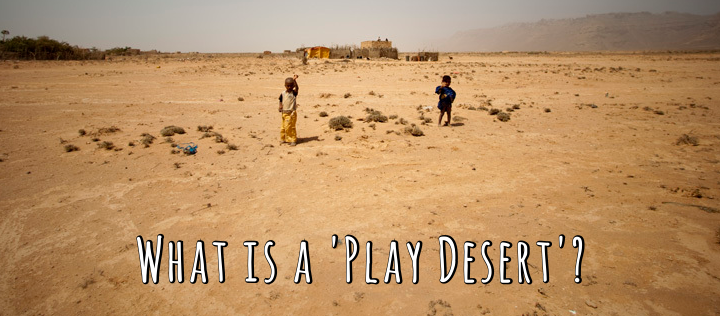How to Prevent a 'Play Desert' in Your Community

Think back to when you were a child. Was there a park or playground that was close to your home? Could you walk to that playground with your parents, siblings, or friends to engage in meaningful outdoor play? You may recall returning home when the street lights were turned on, and if that is one of your childhood memories, consider yourself lucky. Nowadays, for most American children, the luxury of a fun and safe neighborhood playground simply does not exist.
It may be difficult to believe but there is a significant deficit in play opportunities for children nationwide. Urban planners and municipal leaders refer to a community where playgrounds are scarce as a ‘Play Desert.’ These are identified as residential areas dense with children, but that do not have a playground within a ‘walking distance.’ A maximum half-mile radius is considered walking distance, but areas within that distance that have barriers – such as major roadways or lack of sidewalks – are excluded.
In ‘Open Space,’ the official blog of the National Recreation and Park Association, Ann-Marie Spencer reported on ‘recreational deserts’ which typically occur in larger, urban areas. In these areas space for parklands can be limited, and maintenance of safe playgrounds can be expensive. For this reason, Spencer noted, it is common to see protected parks but with little to no commercial playground equipment.
The absence of a well-equipped park has a number of consequences for sociological health and wellness. According to a 2010 report from the Centers for Disease Control, only 1 in 5 American children live within a half-mile of a playground or public access park. On average American cities allocate only 8% of land for recreational use. In an era of rampant childhood obesity, these statistics become cause for concern.
What Factors Create a ‘Play Desert’ In Your Community?
The article discusses three impeding factors that contribute to the presence of a ‘play desert’ in urban centers. They are:
- Physical: The region does not have new space to develop for recreational parks and is limited by cost or availability.
- Access: Parks or school playgrounds present with physical obstacles that make them inaccessible to adults or children with mobility restrictions. Parks that are not ADA compliant.
- Social: Parks or playgrounds exist in areas that may not be or feel safe for families to use.
The Impact for Your Neighborhood
There are significant sociological and health consequences in neighborhoods where commercial playgrounds and athletic fields are absent. By removing a place to play safely outside, children often choose sedentary activities instead, such as gaming or spending time indoors. Given the amount of time that children spend seated during an average day, this can contribute to obesity and other health concerns.
Kids aren’t the only ones that need to get outside and keep moving. Adults are more likely to join children and supervise them in a park. Creating commercial playgrounds that feature other fitness structures will encourage families to get fit and stay healthy together by making the park a regular stop.
The park is the heart of a community, whether it is for an organization, school or Church. Create a meaningful place for your community to get fit and stay that way. Contact an All People Can Play customer service representative at 1-888-404-4416 for more information on quality commercial playground and fitness equipment.


